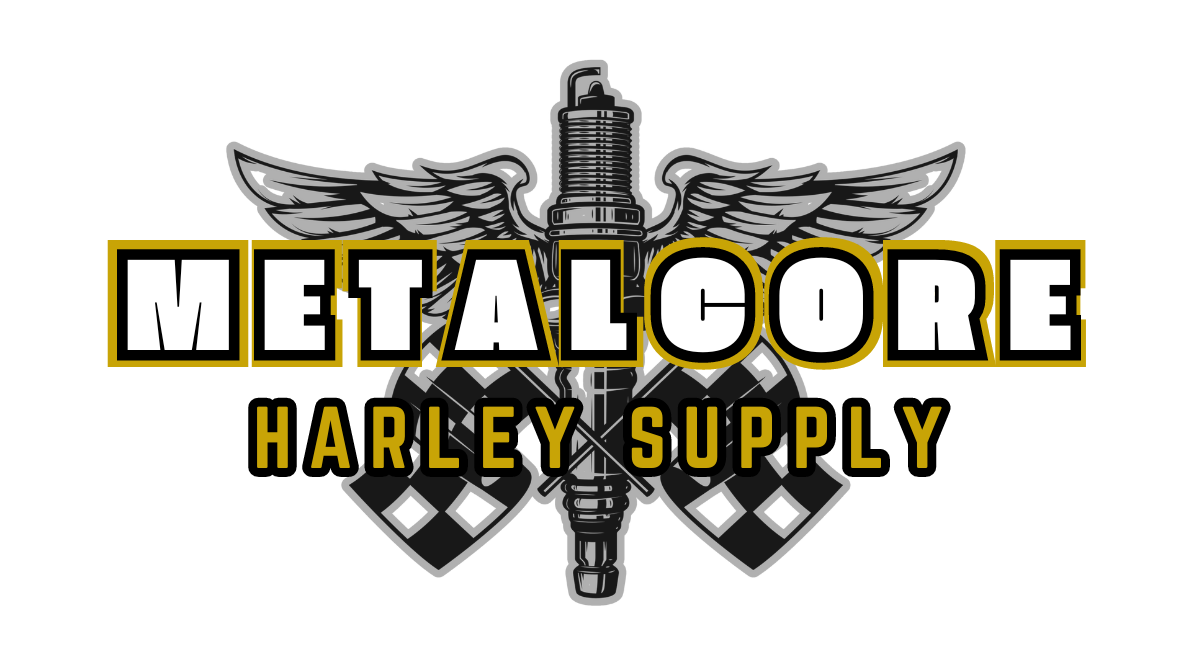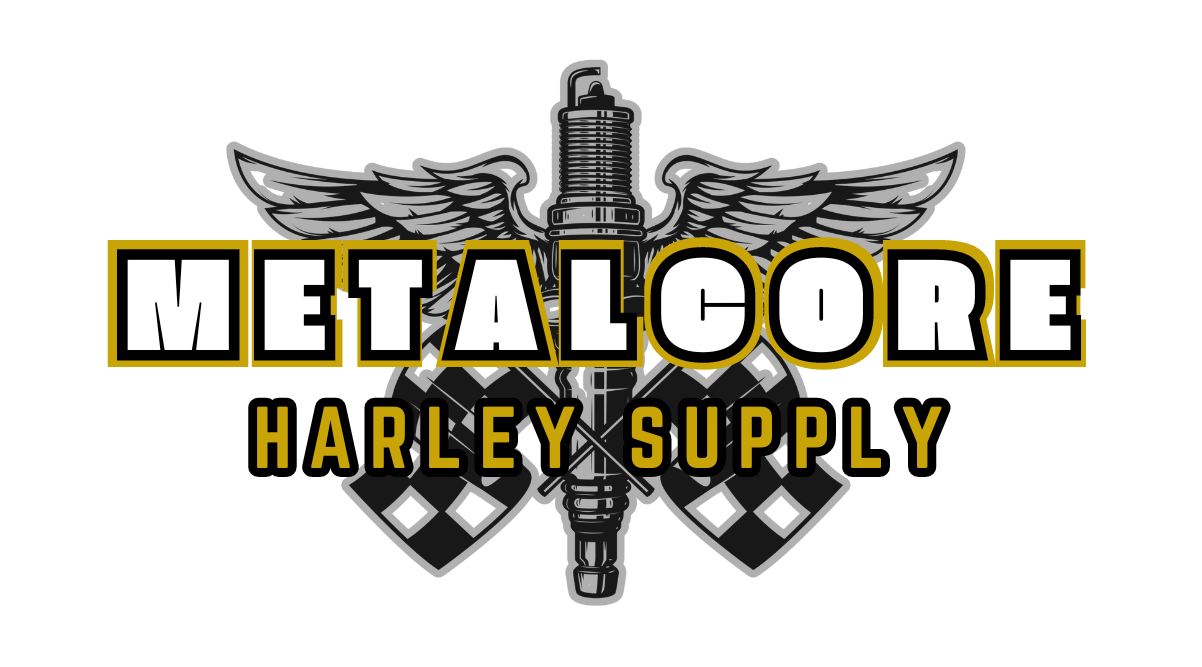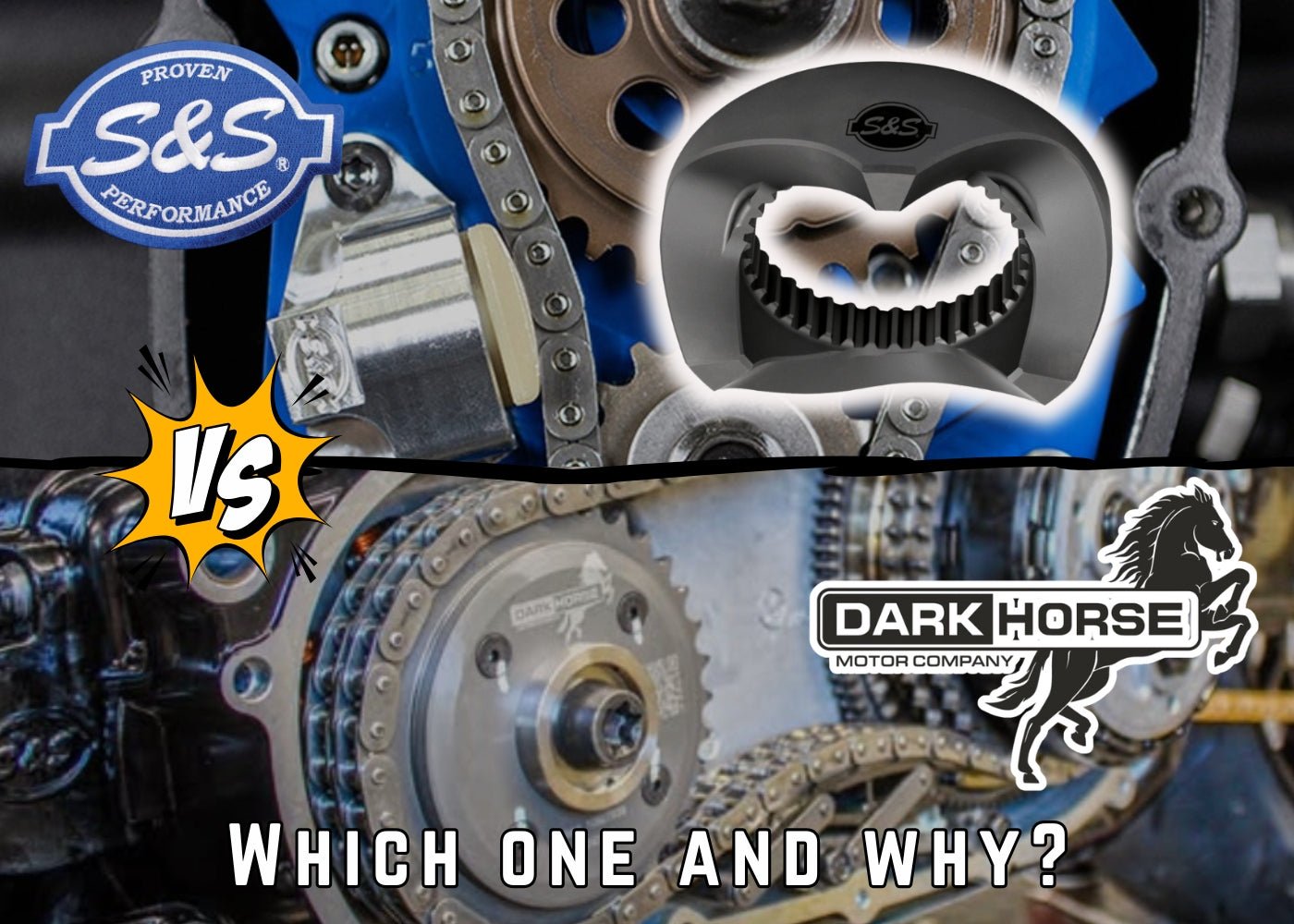Mastering your stop: Advanced break technology for Harley Davidson Motorcycles
Introduction to Harley Davidson Braking Systems
Harley Davidson motorcycles are revered for their powerful engines and iconic designs, but their braking systems are equally important in ensuring a safe and controlled ride. The evolution of Harley Davidson braking technology has been a journey of continuous innovation aimed at improving performance, safety, and rider experience. For riders, understanding how these systems work can make a significant difference in both their safety and the overall performance of their bikes.
The braking system of any motorcycle is far more than just a simple mechanism to stop the bike. It is a critical component that affects how a motorcycle handles, how efficiently it can stop, and how much control a rider has during an emergency situation. This is especially true for Harley Davidson motorcycles, which tend to be heavier and more powerful than many other bikes on the road. This guide will explore the different components and configurations of Harley Davidson brakes, such as rotor sizes, caliper types, and single vs. dual disc setups, and examine how these factors influence performance and the riding experience.
Performance Differences Between Rotor Sizes
Rotor size plays a critical role in a motorcycle's braking performance, and this is especially true for heavier motorcycles like those produced by Harley Davidson. Rotors, also known as brake discs, are the large circular components attached to the wheel that the brake pads press against to slow down or stop the motorcycle. The size of the rotor directly affects its performance, particularly in how much stopping power it can provide, how well it dissipates heat, and how effectively it handles under stress.

Larger Rotors and Stopping Power
Larger rotors are widely considered superior in terms of stopping power because they provide a greater surface area for the brake pads to grip. This increased contact area allows for more friction, which translates into stronger braking force. For heavy motorcycles like Harleys, larger rotors are crucial for bringing the bike to a stop more quickly and safely, particularly at high speeds or when carrying extra weight such as a passenger or luggage. The enhanced stopping power of larger rotors provides a significant safety advantage, especially in emergency situations where every inch of braking distance matters.
Heat Dissipation and Rotor Size
In addition to offering increased stopping power, larger rotors also excel at dissipating heat. When a rider applies the brakes, the friction between the brake pads and the rotor generates heat. If this heat isn’t managed properly, it can lead to brake fade—a dangerous condition where the brakes lose their effectiveness due to overheating. Larger rotors have more surface area to absorb and dissipate heat, reducing the risk of brake fade and ensuring consistent performance even during prolonged braking, such as when riding downhill or in stop-and-go traffic.
Smaller Rotors and Their Trade-Offs
Smaller rotors, while lighter and more affordable, generally don’t offer the same level of performance as larger rotors. The reduced surface area means less friction, which can result in longer stopping distances, particularly under heavy braking conditions. Additionally, smaller rotors are less effective at managing heat, increasing the likelihood of brake fade during extended or aggressive braking. However, for riders who prioritize weight savings or who don’t typically engage in high-performance riding, smaller rotors can still be a viable option. They are often found on lighter, less powerful motorcycles where the demands on the braking system are lower.
Benefits of Larger Rotors
The benefits of larger rotors on Harley Davidson motorcycles are manifold. These rotors offer several key advantages that enhance both safety and performance, making them particularly suited for riders who demand more from their braking systems.
Improved Stopping Power
One of the most significant benefits of larger rotors is the increased stopping power they provide. By offering more surface area for the brake pads to grip, larger rotors can create more friction during braking, resulting in shorter stopping distances. This is especially important on a heavy motorcycle like a Harley Davidson, where the additional mass requires more force to bring the bike to a complete stop. Riders can feel more confident knowing that their brakes can handle emergency stops or sudden decelerations with ease.
Better Heat Management
Increased surface area on larger rotors also means better heat dissipation. Brake fade is a serious concern for riders, particularly during prolonged braking or in high-performance situations. Larger rotors help mitigate this issue by absorbing more heat and dissipating it more effectively. This leads to more consistent braking performance, even under extreme conditions such as high-speed riding or heavy traffic. For riders who enjoy long-distance touring or who frequently find themselves in stop-and-go situations, larger rotors can make a noticeable difference in both safety and comfort.
Enhanced Performance in Demanding Conditions
Larger rotors are particularly beneficial for riders who tackle challenging environments, such as mountainous terrain or high-performance applications. In these scenarios, frequent and hard braking is often required, and the ability to rely on consistent, powerful braking is essential. With larger rotors, Harley Davidson motorcycles can maintain peak performance even in these demanding conditions, providing riders with the confidence and control they need.

Drawbacks of Larger Rotors
Despite the clear benefits of larger rotors, there are also some drawbacks that riders should consider when deciding whether to upgrade their braking system.
Rotor Weight
One of the most notable downsides of larger rotors is the additional weight they add to the motorcycle. While the extra mass can improve braking performance, it can also affect handling. The added weight may lead to slower acceleration and deceleration, and because the rotors are part of the motorcycle's unsprung weight (the parts not supported by the suspension), they can influence the suspension dynamics as well. The increased unsprung weight can make the motorcycle feel less nimble and may result in a harsher ride, particularly on rough or uneven roads.
Cost
Larger rotors are also more expensive than their smaller counterparts. The additional material and engineering required to produce larger, high-performance rotors contribute to their higher price tag. For riders on a budget, this can be a significant consideration, particularly when factoring in the potential need for additional upgrades to the braking system, such as calipers or brake pads, to fully take advantage of the larger rotors.
Multi-Piston vs. Single-Piston Calipers
The caliper is another critical component of a motorcycle's braking system. The caliper houses the brake pads and uses hydraulic pressure to push the pads against the rotor, creating the friction needed to slow down or stop the bike. The number of pistons within the caliper plays a key role in how evenly pressure is applied to the brake pad and, subsequently, how effective the braking system is.

Multi-Piston Calipers
Multi-piston calipers, as the name suggests, feature multiple pistons (usually two, four, or six) that press against the brake pads. These calipers are commonly found on high-performance motorcycles and offer several advantages over single-piston calipers.
Superior Braking Performance
The primary benefit of multi-piston calipers is their ability to distribute pressure more evenly across the brake pad. This even distribution allows for stronger, more consistent braking performance, particularly under high-stress conditions. On a Harley Davidson, where powerful braking is essential, multi-piston calipers can make a noticeable difference in how the bike handles during braking, especially at higher speeds or when carrying heavy loads.
Better Modulation
Another advantage of multi-piston calipers is the improved braking modulation they offer. Modulation refers to the rider's ability to control the amount of braking force applied, which is crucial for maintaining control during braking. Multi-piston calipers allow for more precise control over the braking force, making it easier for riders to smoothly transition from light braking to full stops. This is particularly beneficial in performance riding or situations where fine-tuned control is required, such as cornering or wet conditions.
Increased Heat Dissipation
Multi-piston calipers also excel at managing heat. With more pistons working to press the brake pads against the rotor, the heat generated during braking is distributed more evenly. This reduces the risk of localized hotspots that can lead to brake fade, ensuring that the braking system remains effective even during prolonged or aggressive riding.
Single-Piston Calipers
Single-piston calipers, on the other hand, are typically found on entry-level or less performance-focused motorcycles. These calipers feature just one piston that presses against the brake pad, and while they offer adequate braking performance for most everyday riding situations, they do have some limitations compared to multi-piston setups.
Cost-Effective
One of the main advantages of single-piston calipers is their cost-effectiveness. They are generally less expensive than multi-piston calipers, both in terms of initial purchase and ongoing maintenance. For riders who don’t require the enhanced performance of a multi-piston system, single-piston calipers can provide reliable braking at a lower cost.
Adequate for Light Riding
For casual riders or those who primarily use their Harley Davidson for light commuting or leisurely rides, single-piston calipers are often sufficient. They provide adequate stopping power for most everyday riding scenarios and are easier and less expensive to maintain than multi-piston systems.
Single Disc vs. Dual Disc Front Brakes
The front braking setup on a motorcycle can feature either a single disc or dual disc configuration, and the choice between the two depends largely on the rider’s needs and preferences.
Single Disc Front Brakes
Single disc front brakes consist of one rotor and caliper mounted on the front wheel. This setup is often found on lighter motorcycles or models designed for casual riding.
Weight Savings
One of the biggest advantages of a single disc setup is the weight savings it offers. With fewer components, the overall weight of the motorcycle is reduced, particularly on the front wheel. This reduction in weight can lead to improved handling, quicker acceleration, and better fuel efficiency. For riders who prioritize maneuverability or who ride in urban environments where agility is important, a single disc setup can offer significant advantages.
Simplicity
Another benefit of single disc brakes is their simplicity. With fewer components to maintain, single disc setups are easier and less expensive to service. This makes them an attractive option for riders who prefer a low-maintenance bike or who don’t require the enhanced braking power of a dual disc setup.
Dual Disc Front Brakes
Dual disc front brakes feature two rotors and two calipers, one on each side of the front wheel. This configuration is commonly found on performance or heavy-duty motorcycles, including many Harley Davidson models.
Enhanced Stopping Power
The primary advantage of dual disc brakes is the increased stopping power they provide. With two rotors and calipers sharing the workload, dual disc setups can generate significantly more braking force than single disc systems. This is particularly important for heavy motorcycles like Harleys, where the additional mass requires more braking power to bring the bike to a safe stop.
Better Heat Dissipation
Dual disc brakes also excel at dissipating heat. With two rotors to absorb and dissipate heat, the system is less likely to overheat during prolonged or aggressive braking. This reduces the risk of brake fade and ensures consistent performance, even in demanding conditions.
Balanced Braking
One often overlooked benefit of dual disc setups is the improved balance they offer during braking. By distributing the braking force more evenly across both sides of the front wheel, dual disc systems help maintain stability and control, particularly during high-speed stops or emergency braking situations.
Single-Piece vs. Multi-Piece Rotors
The construction of brake rotors also plays a crucial role in a motorcycle’s braking performance. Rotors can be either single-piece or multi-piece, with each type offering distinct advantages and disadvantages.

Single-Piece Rotors
Single-piece rotors are made from a single piece of metal, usually steel or iron, and are known for their durability and simplicity.
Durability
One of the main benefits of single-piece rotors is their durability. Because they are made from a single piece of metal, these rotors are less prone to warping or cracking under high-stress conditions. This makes them ideal for riders who prioritize longevity and reliability in their braking systems.
Cost-Effective
Single-piece rotors are generally more affordable than multi-piece versions. The manufacturing process is simpler, which translates to lower production costs and, ultimately, a lower price for the consumer.
Maintenance
Single-piece rotors are also easier to maintain. With fewer components to inspect and service, they offer a more straightforward maintenance routine, making them a popular choice for riders who prefer a low-maintenance braking system.
Multi-Piece Rotors
Multi-piece rotors, on the other hand, are made from two or more pieces, typically with an aluminum carrier and a steel or iron braking surface. These rotors are commonly found on high-performance motorcycles.
Weight Savings
One of the biggest advantages of multi-piece rotors is their weight savings. By using lightweight materials like aluminum for the rotor carrier, manufacturers can reduce the overall weight of the rotor without sacrificing strength. This reduction in weight can improve handling and reduce the motorcycle’s unsprung weight, leading to a smoother ride.
Enhanced Heat Dissipation
Multi-piece rotors also offer better heat dissipation. The separation between the braking surface and the rotor carrier allows for more efficient cooling, which can improve performance under heavy braking. This makes multi-piece rotors ideal for riders who frequently engage in aggressive or high-performance riding.
Customizability
Multi-piece rotors often come in a variety of designs and configurations, allowing riders to customize their braking setup to suit their specific needs and preferences. This level of customization is particularly appealing to performance-focused riders who want to fine-tune their motorcycle for optimal performance.
Choosing the Right Braking System for Your Harley Davidson
Selecting the right braking system for your Harley Davidson motorcycle depends on a variety of factors, including your riding style, performance needs, and budget. Larger rotors and multi-piston calipers offer superior braking performance and heat management, making them ideal for riders who demand high-performance braking or who frequently tackle demanding environments. Dual disc setups provide enhanced stopping power and balanced braking, while single disc systems offer simplicity and weight savings, making them a good option for casual riders or those who prioritize ease of maintenance. Finally, the choice between single-piece and multi-piece rotors depends on your preference for durability versus performance and customizability.
Whatever setup you choose, understanding the nuances of Harley Davidson braking technology will help you make an informed decision, ensuring that you get the most out of your motorcycle’s braking system. Whether you’re upgrading your bike for improved performance or simply looking for a more comfortable and reliable ride, the right braking components can make all the difference in your riding experience.
FAQs
What are the benefits of upgrading to larger rotors on my Harley?
Upgrading to larger rotors provides greater stopping power, better heat dissipation, and improved overall braking performance, especially for heavy motorcycles and high-performance riding.
How do multi-piston calipers improve braking performance?
Multi-piston calipers distribute pressure more evenly across the brake pad, resulting in better braking efficiency, more precise control, and improved heat dissipation.
Is it worth upgrading to dual disc front brakes?
Yes, dual disc front brakes offer enhanced stopping power and better heat management, making them ideal for heavy motorcycles or for riders who demand high-performance braking.
What are the differences between single-piece and multi-piece rotors?
Single-piece rotors are more durable and cost-effective, while multi-piece rotors offer weight savings, better heat dissipation, and more customization options.
How often should I maintain my Harley's braking system?
Regular brake inspections should be performed every few months, or more frequently if you ride often or under extreme conditions. Replace worn components as necessary to ensure safe and optimal braking performance.
By understanding the differences in Harley Davidson braking systems, you can make informed choices to enhance your riding experience, improve your bike's performance, and ensure you stay safe on the road.





Leave a comment
This site is protected by hCaptcha and the hCaptcha Privacy Policy and Terms of Service apply.